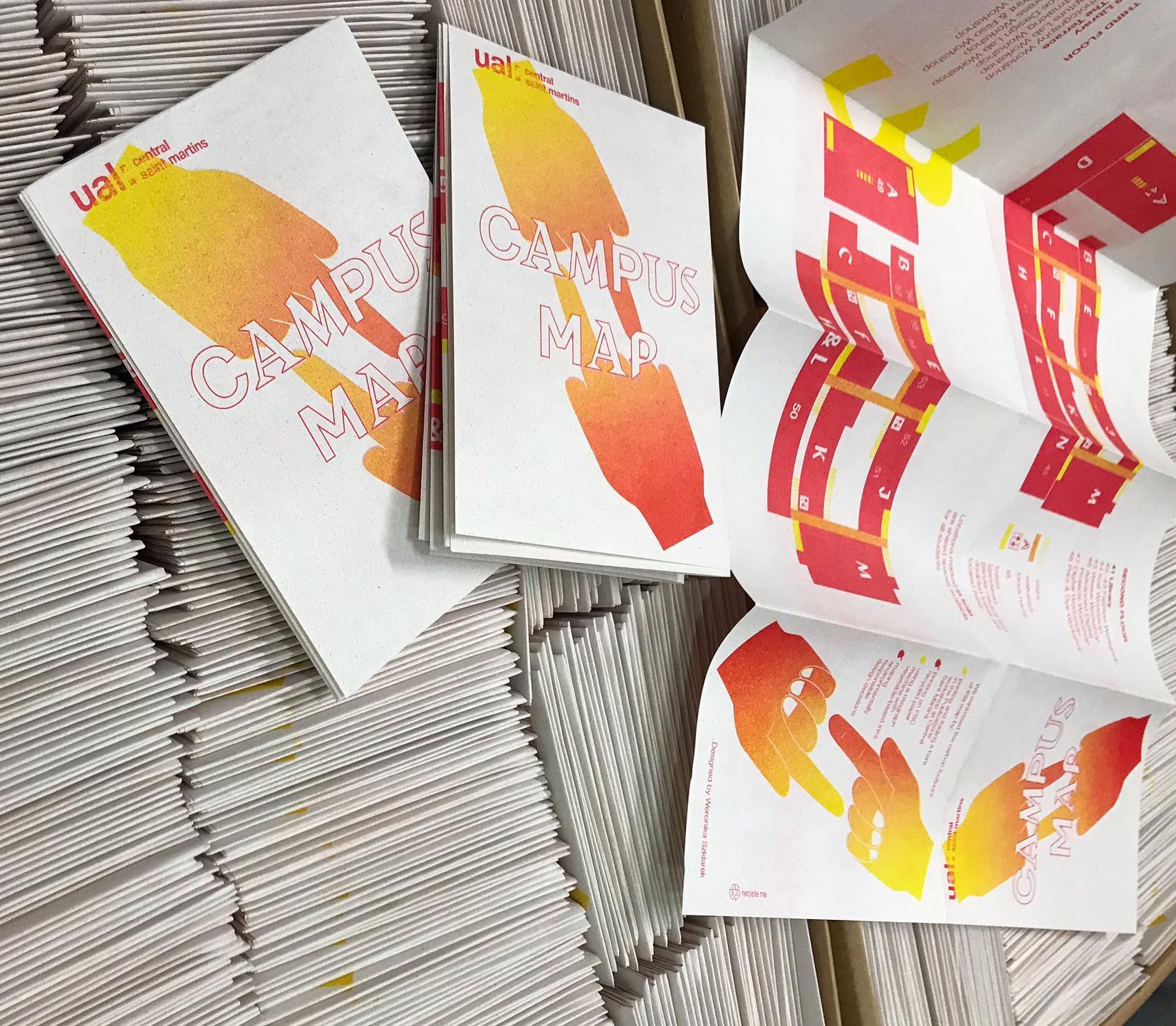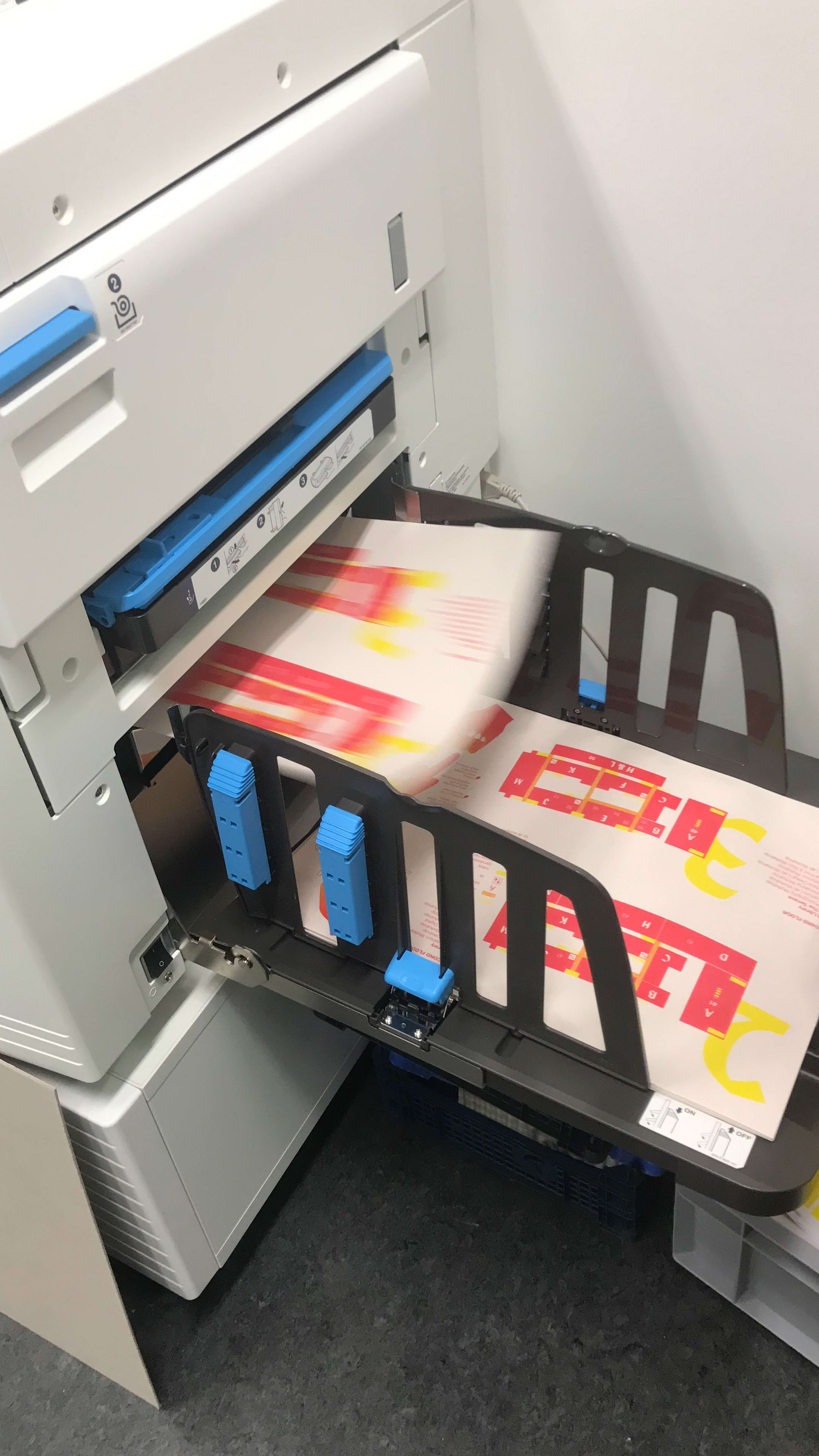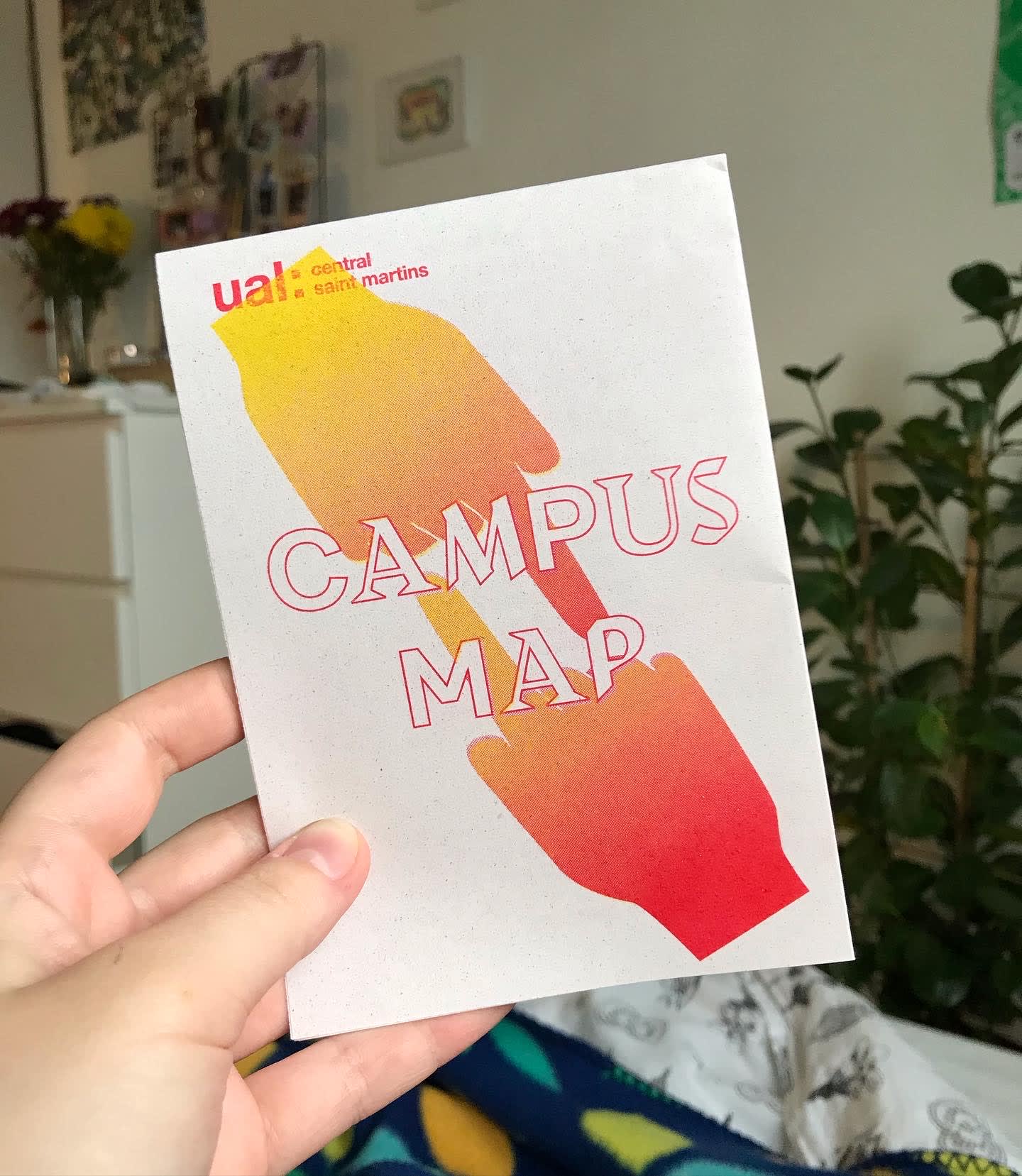In Summer 2021, we commissioned Graphic Communication Design student Weronika Szklarek, part of the CSM Associates programme, to work on a wayfinding project for our King's Cross site. Here, Weronika shares her design process and reveals how she ensured the project was as sustainable as possible.
What was the project brief?
The project included two challenges:
- To produce a new map of the CSM King's Cross building to help new and returning students find our shared spaces and workshops.
- To produce signage for display outside these spaces, which would feature QR codes that students could scan to find out more information.
I still remember my first days at CSM and how vast the building seemed. It made me think at the time that I wanted to design a map - which could be useful but also end up as a small souvenir for students. Now I have!
What was your approach to designing the map and the QR code signage?
I wanted to create something user friendly and practical, but at the same time not make it look too official or corporate. The whole project was completed using sustainable materials and solutions which, I believe, is how we will design in the future – both for necessity and aesthetics. We decided to design, print and fold the map in-house at Central Saint Martins, in order to reduce our carbon footprint. The whole process took place in the Publications workshop - we wanted to show the possibilities of that space and of CSM in general. It allowed us to be independent and have full control over each stage of production.

How did you ensure that the project was environmentally conscious?
One of the most important decisions was choosing the right paper and printing technique. The whole team responsible for the map was in agreement that we should use risograph – probably one of the most sustainable ways of mass producing print. The paper we chose was Favini Crush, a unique product made near Venice using electricity from a hydroelectric pump. The whole paper range gets its colours from post-consumer waste, including almonds, oranges, corn, lavender and more. In our case, the paper was created using grape waste. I think details like these really add a new dimension to the project and show how important materials are when creating physical work.
The person who kept an eye on the whole process was Isabel Albiol Estrada, who runs the Publications workshop at CSM. She is well-grounded in sustainable practices and a true printing expert. Together, we made sure to calculate and use certain sizes of paper in order to reduce any waste (which I have happily turned into sketchbooks using my bookbinding training) and use only recyclable materials to create both the maps and signage.
How was the process of using risograph printing?
Risograph printing is very special; it was developed in Japan in the 1980s and has been used by political parties, communities and subcultures for campaigns (it still is now!). What I love about risograph is that it gives beautiful, vivid colours (impossible to mimic via digital print) using soy-based inks, making it a sustainable practice. Riso is imperfect; it leaves trace marks, and the ink never fully dries so it smudges with the touch of a finger. I like to think this way the artwork carries the experience of its users.
Riso can be an amazing tool to produce a large volume of prints, if one knows how to use it! Together with Isabel and Vitoria Bastos, Riso Technician at CSM, we did a lot of tests to make sure the ink intensity was spot-on, and all layers were aligned perfectly.
What tips would you give to other designers looking to make their practice more sustainable?
To all designers wanting to explore the world of sustainable printing, I highly recommend ‘The Green Design and Print Production Handbook’ by Adrian Bullock and Meredith Walsh, which you can loan from the CSM library!
Behind the scenes
-
Maps being printed using risograph
-
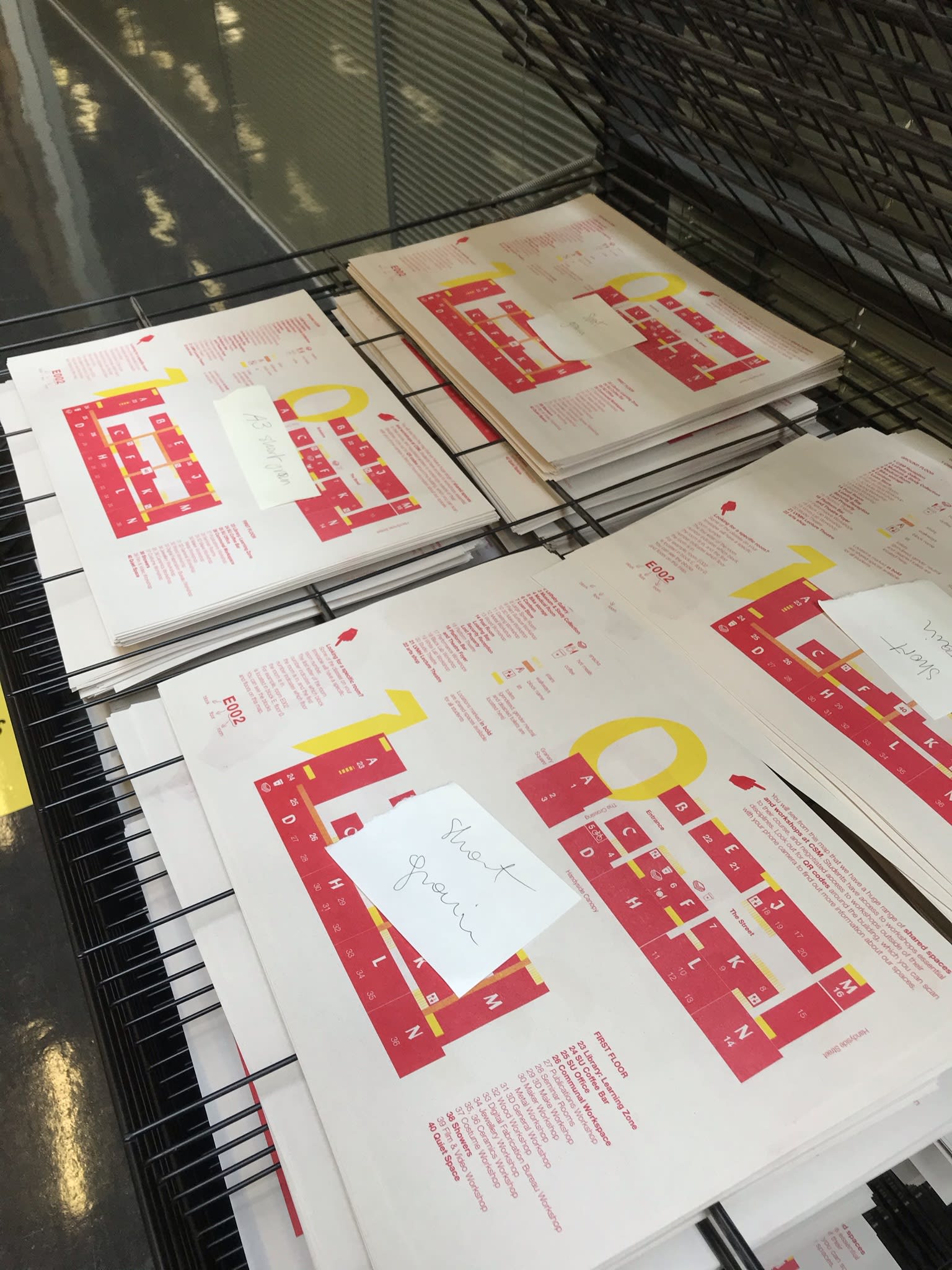
Maps waiting to be folded
-
Map cover design
-
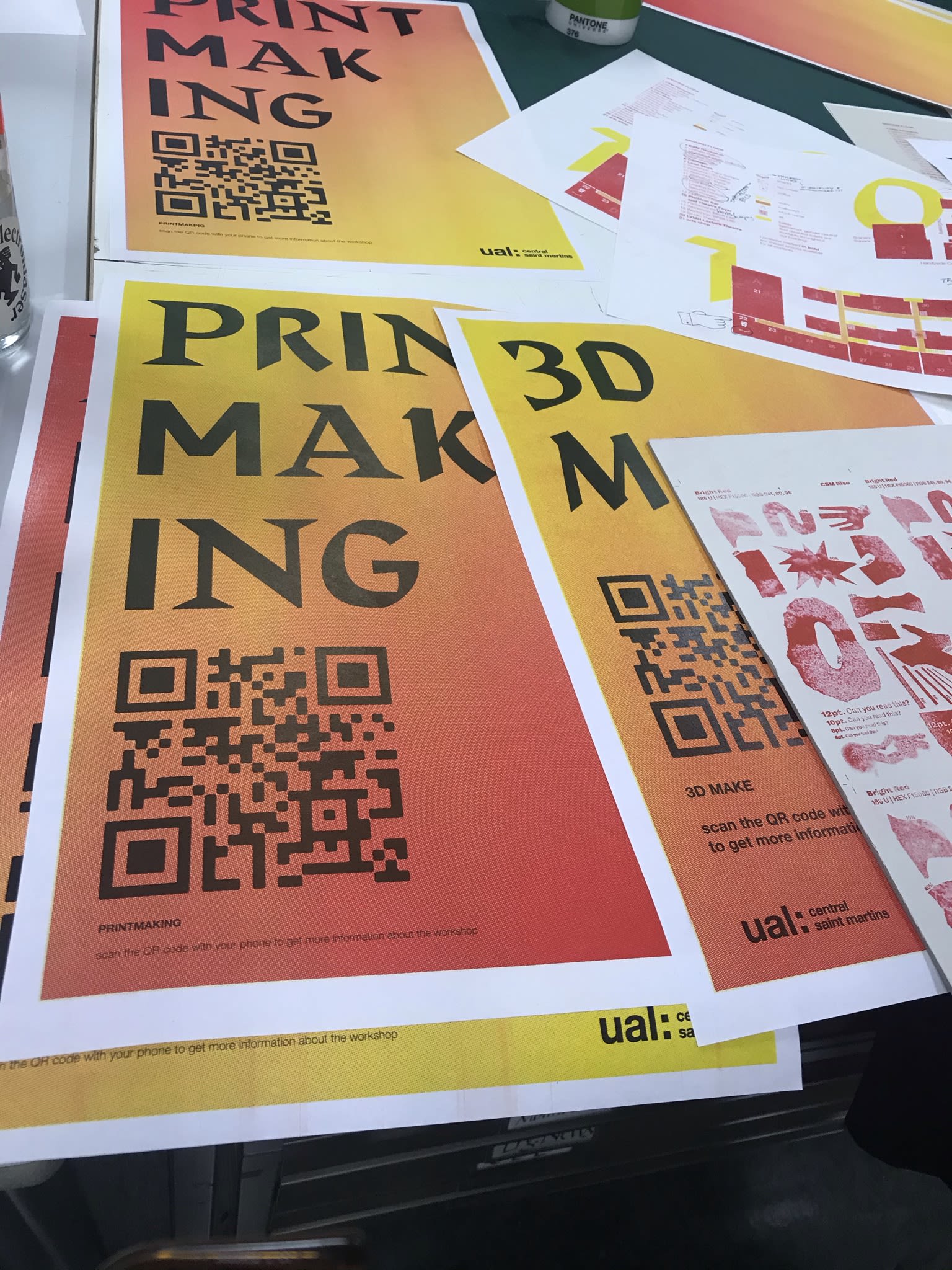
Test prints for the QR code signage
-
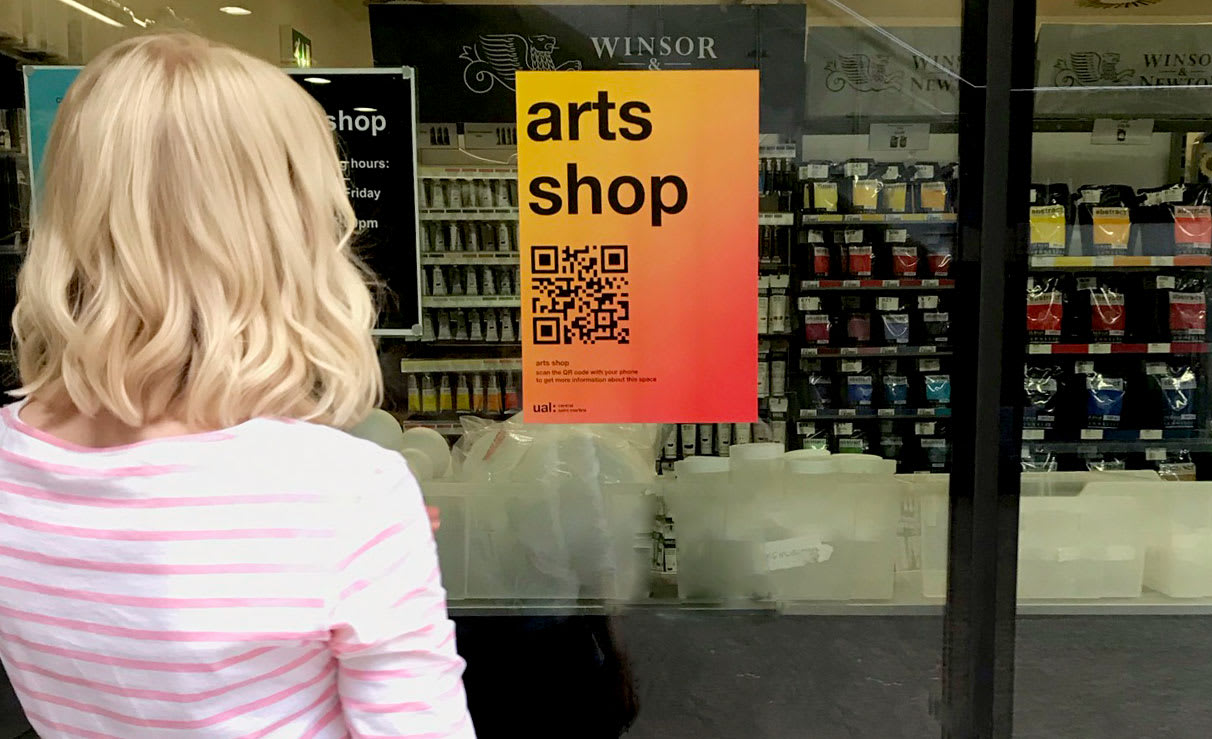
QR code signage on display
Did you make any surprising decisions during the project?
One of the major decisions, made in the process of printing, was to remove the colour black from the map design completely – text in colour has a special quality, not often seen in official and everyday design solutions.
What was the most challenging aspect of the whole process?
I would say quantity, quality and producing everything in-house at CSM. Of course, making 2000 double-sided maps with two sets of hands was challenging, but it also pushed us towards more efficient solutions.
Are you pleased with the final outcome?
Making the campus map was an amazing learning experience. Apart from the joy it brought me, the trust and freedom CSM staff have provided me with was truly remarkable. I adore the fact that this project has been realised for and by students, it highlights the community at CSM. I love the final outcome and am truly proud of it.
Where can we see more examples of your work?
Come and visit me at @weronika_designs and @weronika_does_life on Instagram!
Download the map
Want to check out the map? Download a digital copy here!
Using a mobile? Download our mobile friendly map (PDF 3.8MB)
Using a desktop? Download our desktop friendly map (PDF 202KB)
Don't forget to look out for our QR code signs around the building - you can scan them using your phone camera to find out more about our spaces and workshops - including what they're used for, opening hours, how to contact our technicians and more.
Join The Associates
Are you a Central Saint Martins student interested in working on projects like this one? Apply to join The Associates, a funded opportunity to share sights, sounds and stories from inside the College.
